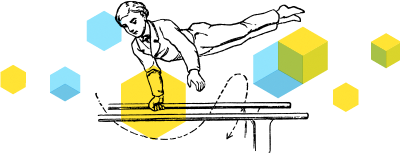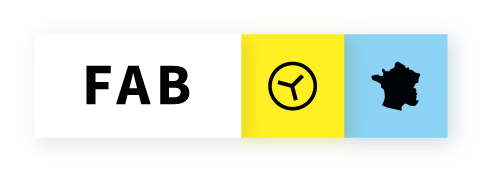CR Entretien Vittorio Carta (Benchmark MaaS)
Description en une ligne : Interview of Vittorio Carta, Deutsche Bahn AG, Manager Transport Policy Europe, OSDM Initiative Manger, FSM Initiative Manager about OSDM onducted in english by Marguerite Grandjean and Ghislain Delabie as part of Benchmark Standards MaaS, october 22, 2021
Description : Interview of Vittorio Carta, Deutsche Bahn AG, Manager Transport Policy Europe, OSDM Initiative Manger, FSM Initiative Manager about OSDM onducted in english by Marguerite Grandjean and Ghislain Delabie as part of Benchmark Standards MaaS, december 01, 2021
Intro
What is your role at OSDM ?
I've been working for Deutsche Bahn for 20 yrs at the holding level (based in Frankfurt) - ticketing & passenger division OSDM/FSM: I took the position of Initiative Manager position in 2018. Within DB small team of 3 people.
OSDM is an initiative started as FSM in 2013 (8 yrs old), started when vulcano Island stopped every flight, then politicians said we should use more train, but realized we still got work to do.
With neutral name OSDM, ticket vendors & railway companies worked together.It emerged from the new Tariff Model (nTM) and Full Service Model (FSM 2.0) initiatives. Idea = create an open IT framework for distributing tickets, adapted to the characteristics of rail business but actually designed to be multimodal. We finished writing specs in 2018.
Not funded publicly. Industry experts on company time. Huge effort for the company (DB). In 2018, decided to simplify the language and move to an easy software language (JasonRest). Migrated all the specs. Objective of simplifying the language = to make it accessible to smaller parties. Asked by EC. Smaller companies = e.g. night trains coming from Austria, Swiss bus... Simpler code, larger base. Finished migration end 2020.
2 main streams:
- Offline: merged from UIC. Static data + prices & fares.
- "Old FSM" = OSDM Online: price is usually valid at the moment when you book, but then it
changes and you can't access the updated price. If you want to offer a ticket, need up-to-date price.
Main difference from public transport: peak, off-peak, night; here, millisecond changes. Enlarged also to MaaS: public mobility, ferries, buses...
Free of charge, for anyone.
Scope = linking the distribution system for all companies to speak the same language, the OSDM protocol.
- To provide a convenient way for a customer to book an international train service, including refund and exchange processes.
- To provide a specification that can be supported by existing or upcoming systems without major investments.
- To reduce unnecessary message conversions between callers as they provide no business value.
- Searching for trips
- Getting offers
- Booking an offer
- Confirmation of the booking
- Fulfillment of the booking
Analogously, the after-sale process is modelled in the following steps:
- Getting a refund/exchange offers
- Booking a refund/exchange offer
- Fulfillment of the booking
OSDM is only a technical enabler, not touching the commercial part.
History
When was it created ?
2013 - 2018
How much time did it take ? Convening all parties around the table
5 years. It took this amount of time because there was a large number of ppl around the table. Makes it complicated, but now it's stable, the interests and positions have been merged, this is what makes OSDM unique.
Who was involved frrom the start ?
BENE, CD, DB, DSB, öBB, PKP IC, RENFE, Rail Delivery Group, SBB, SJ, SNCF, Trenitalia and other UIC Railways as well as distribution solutions provided by Amadeus, Sabre, Silverrail, Sqills, Trainline, Travelport and others. Furthermore, the Hermes ecosystem for reservations as well as existing UIC leaflets were carefully examined and taken into account.
Recently Bileto as well as Turnit have joint the initiative and are using the standard for the distribution of bus rides.
Advisors from **CER, CIT, ECTAA, EU Traveltech** and sounding boards from the European Commission as well as the European Rail Agency were involved from the start and guided the effort.
By involving the experts of all the parties, we are confident that the OSDM Model is powerful enough to support the distribution of existing or upcoming commercial products and can be implemented and supported at reasonable cost.
To address the third goal we took an end-to-end approach to the call chain from Distributor to Allocator to Fare Provider (aka. carrier) and aligned the interfaces by modelling them the same. Thus calling a provider, an allocator or a fare provider is exactly the same from an API perspective. The only difference is that in allocator mode you get fare specific information.
Is it supported by the EU/ERA ?
Yes. Don't want to reinvent the wheel: if a standard works, we should use it. Current standards deal with static data but need dynamic pricing.
ERA asked for a standard covering all market. OSDM is driven by participants covering 95% of rail market. Official support.
- Dec.21 : working with ERA (European Railway Agency) on assimilating OSDM in the TSI (Technical Specifications for Interoperability) in June 2022 within the TAP TSI revision process/. See https://www.era.europa.eu/activities/technicalspecifications-interoperability_en
- 16 Dec: 1st TSI meeting. Until June 22, deciding how much of OSDM will be assimilated by TAP TSI (Telematic Application for Passenger services), rail for retail, managed by ERA.
Official procedure to involve rest of sector that is not member of OSDM. Official consultation in
TAP TSI for 6 months for final proposal with OSDM (UIC RAS) ready to be integrated into TAP
TSI.
Is OSDM destined to become "crowned" as the official CEN standard ?
Main difference = TAP TSI coming from regulatory body, OSDM is a sector initiative.
How much voluntary can go into regulation? As much as possible, but also makes it less flexible. But better to put something existing into the law.
Links with the CEN / Transmodel ?
We're talking with CEN. 6 meetings.
Final set of recommendations, report for the Commission, Dec.21.
CEN coming from urban mobility side, so pushing Netex. We say Netex doesn't fit rail, mainly for public transport.
Agreed for a convertor to each other.
OSDM is a standard dealing with business need, as unified as possible, a useful standard for rail,
not a regulation or a official standards.
Adoption
How many implementation today ?
Implementations are ongoing.
Working on boosting implementations within the company (DB).
- CER / USC
- U Traveltech (Trainline, Amadeus...)
- Turnit, Billetto.
- SPB
- Queels.
- Amadeus.
We planned to implement OSDM in 2020 but Covid, and regulatory measures coming. Today we're ready to invest 2-3 years to link all our distribution systems, but first we need confirmation from European Commission that there's nothing coming against OSDM from TAP TSI.
Ready to start, already started, but need final commitment. Late 2025, in 3 years, pan-european implementation of OSDM is envisaged.
Huge work to involve 50 partners in Europe. For companies who can't afford the full solution, we'll provide converters.
Openness
What does "open standard" mean for you ?
If you don't make it open, the standard won't be used. You need to be recognized.
We started big, let everybody join, product-fitting the interest of everybody.
Why is it important ?
Openness helped with adoption.
Objective is to interface the distribution system to manage products. So need many organisations.
More difficult to get it finished, 7 years total, but waterproof product.
Licence
Apache 2.0
Community
Who is involved ?
- Railways: 20
- Ticket vendors: 5 (Trainlines...)
- IT providers (Queels, Turnit, Amadeus, Trainlines...): 6-7
- Private operators.
- Stakeholders : CEN, ERA...
Who is the owner / decision-maker ?
OSDM is in the UIC governance, with set processes.
Technical proposal, validated by 3 loops, if accepted, final decision in the Exec Committee, where
there's railway companies and ticket vendors.
Avoid conflict.
Who contribute with the tech part ?
Technical freaks are coming from every company. They solve big problems.
Contribute every week.
Every company gives time.
Tech leader comes from Swiss side.
Balanced.
Ticket vendors.
Governance
https://unioninternationalcheminsdefer.github.io/OSDM/organization/
Are there modifications that are done sometimes to the standard ?
Backbone is stable, but you need some updates (like Apple OS).
e.g. Automatic passenger compliance for rebooking in case of delays.
Always backwards compatible.
What is the decision-making process ?
Meet every week 2 hours. e.g. better include multimodality, or including urban mobility.
- Technical committee: experts working on latest developments (compatibility, issues with night
trains...)
- Strategic Executive Committee: main direction, e.g. software migration = Work hand in hand
- User Board = external ppl can join as long as they're cooperative, not only sit there. Everything is voluntary;
- Meeting with stakeholders ; Sounding Board (EC, CEN, EPF, ERA...) to present last results and
contribute
- RUD Railways Undertaking Dialogues with private operators, set up by EC.
Get useful inputs for the remaining 5%.
Voluntary initiative, not subsidized, so not restricted by bureaucracy, but need to understand constraints of all interests of the sector. East or West is really different.
Who participates ? How do you get inputs from the community ?
Everybody is invited.
You can contribute asking to participate with the FSM User Board or on GitHub.
Turnit, Billetto, just joined, and they can come with some concrete proposals. They approach us. Usually technical freaks spend hours on this. They make a proposal.
User Board is open to everyone. Not building walls.
What are the core interest groups ? How are they dissenting ?
Sounding Board.
Technical level: USC. CER.
OSDM context.
Assessment of satisfaction.# Organisation
What is the legal status of OSDM ?
No legal structure stewarding the standard.
Is there a full time team ?
No full time team. Just me and 3 ppl donating time.
Do you want to go fully structured ?
If we become the standard of the Commission, then we need certification partners. We'll need a
small team of ppl doing this, and we can't do it for free. Then we have to decide about the structure.
What are their roles and profiles ?
I am the OSDM initiative manager = 20% of my time.
Also the PSG Chair.
Very complex task. Lot of participants, interest. Ticket vendors = coopetitors.
Contributions 50/50.
Prise de note sur le PAD (cocher si Oui) ? Non
Commun(s) impliqué(s) : OSDM
Communauté(s) d'intérêt impliquée(s) : Standards Ouverts pour des MaaS d'intérêt général
Prochaine Etape : n/A
Autres informations :

 Français
Français English
English Italiano
Italiano